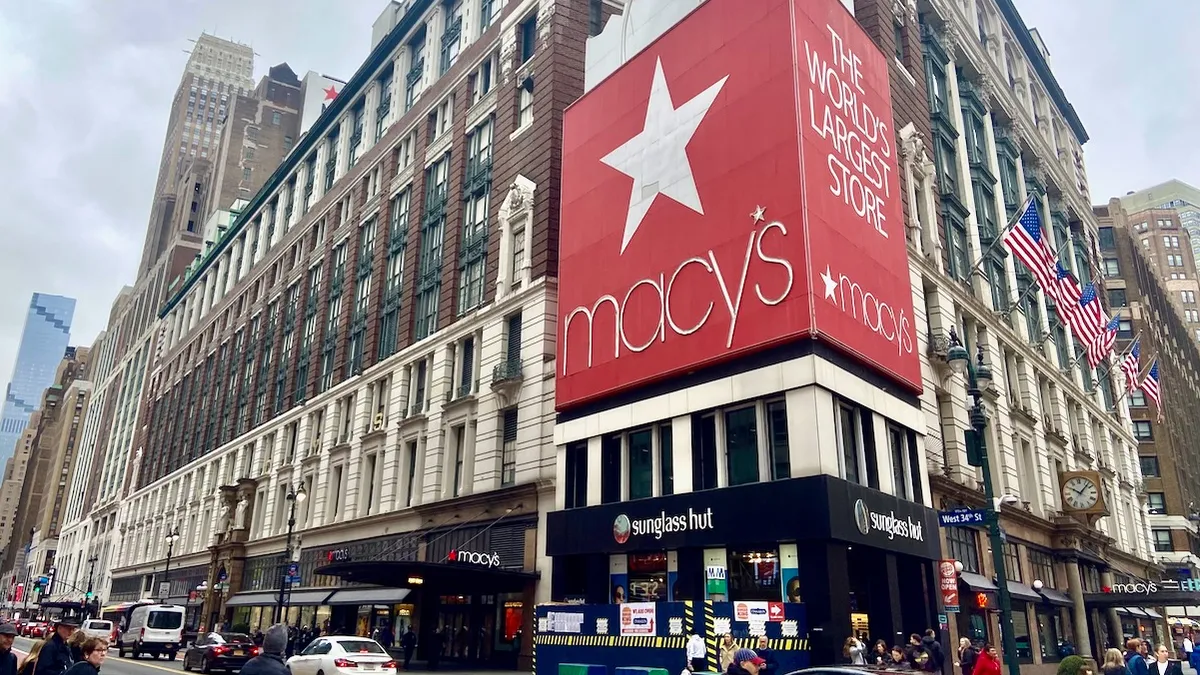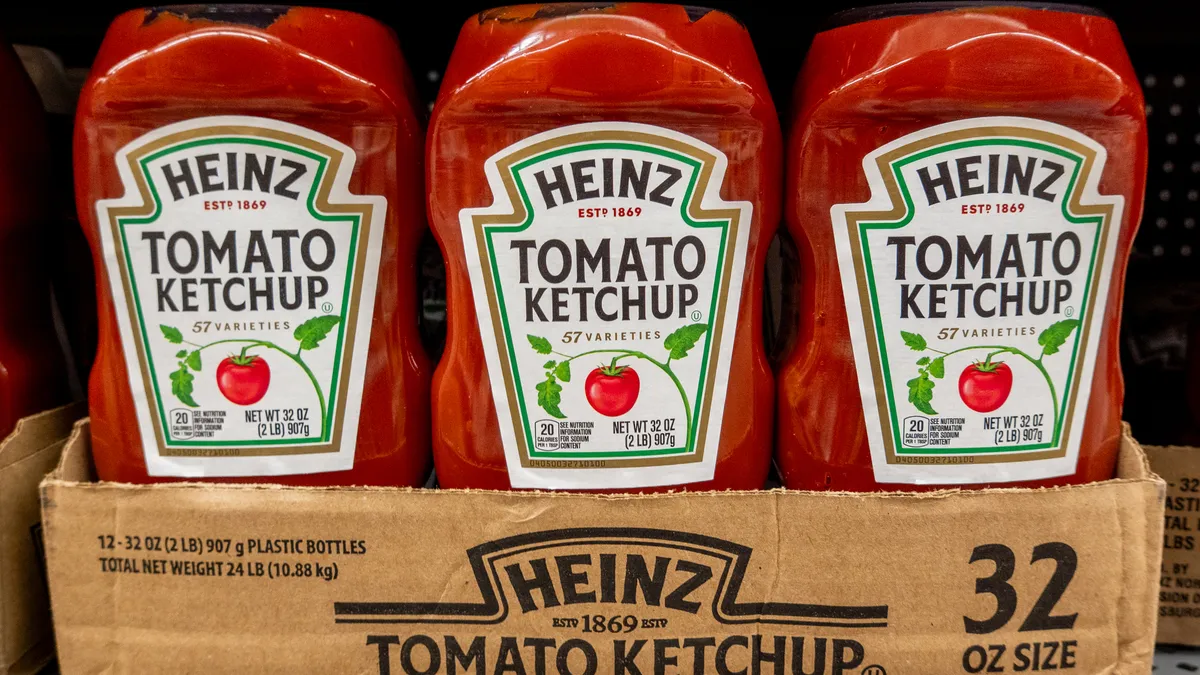Tillamook's operations team didn't wait around as the coronavirus began to disrupt global supply chains. The team started contingency planning in late January, weeks before the World Health Organization declared COVID-19 a pandemic.
At first, the plan was to carry two to three weeks of extra cheese inventory. The dairy cooperative operates a lean supply chain and typically keeps one to three weeks of cheese stock on hand.
Tillamook continued to build inventory until it was carrying "a few million extra pounds of cheese" and using 3PL warehouses to hold additional stock, said Elaine Videau, senior planning manager for dairy cooperative Tillamook.
But by April, Tillamook had shipped through the extra inventory plus its normal safety stock. "We were running hand to mouth shipping from the line onto trucks," Videau said in an interview.
The organization has since made a series of operational and logistics changes to scale up production and has even grown sales and captured market share ahead of schedule, according to Videau.
Now the focus is on long range plans — a more difficult task given the uncertainty of the coronavirus and the economy. Videau is losing sleep over a conundrum many demand planners face: how to balance unprecedented consumer demand during the pandemic with longer-term supply chain planning and inventory needs. If Tillamook sells safety stock now, it will make future inventory uncertain, particularly for cheeses that require months or years of aging.
"We've lost that cushion, and now that cushion is going to be gone for nine to 24 months," she said.
How a dairy handled demand swings
Tillamook is flying through inventory because it primarily sells to retail channels, which ramped up orders as consumers purchased more. Videau said Target bought two to three times more from Tillamook than before the pandemic.
Other food suppliers were not so lucky, said Andrew Novaković, the E.V. Baker Professor of Agricultural Economics Emeritus at Cornell University's College of Agriculture and Life Sciences. Vendors with a heavy customer mix in food service, such as restaurants, businesses or schools, saw significant shrinkage in demand.
"We were running hand to mouth shipping from the line onto trucks."

Elaine Videau
Senior Planning Manager, Tillamook
The dairy industry is particularly vulnerable to demand swings because of processing plants' specialized nature. "The thing you make defines itself in terms of who the customers are," Novaković said.
Producers of cheeses such as feta, bleu and swiss were heavily impacted, because they are mostly sold in restaurants. Processed cheese took a hit because much of it goes through food service channels. But cheddar cheese faced less impact, as it is consumed more heavily in households.
Tillamook’s product assortment includes various types of cheddar, pepper jack, swiss, mozzarella and blends, among others.
Dairy producers can’t easily flip a switch on their products to cater to demand, Novaković said. "Because of the high degree of specialization, you really couldn't be very nimble," he said. "It wasn't very easy to pivot." Rather than agility, how dairy product suppliers have fared in the pandemic is more luck of the draw, according to Novaković.
The firms with a balance of food service and retail grocery customers had an advantage and were naturally able to shift, said Peter Bolstorff, EVP of corporate development at the Association for Supply Chain Management.
That's what Tillamook did — it repurposed lines to make a one- to two-pound bag of shredded cheese for consumers rather than a 15-pound bag for food service customers. It also diverted incoming milk to grocery products that typically would have gone to food service channels.
Farms had copious milk supply as one of the largest buyers, school systems, halted orders with schools shuttered during the pandemic. At times, more milk was coming in from dairies than the plants could handle, Videau said.
"The cow's going to give milk and there's no switch to turn off and change that," Novaković said, though he cautioned that farmers dumping milk happened less often "than the media would have you believe."
Tillamook's tactics: Pallets and strategic SKU shortages
With raw milk supply plentiful, Tillamook ran into bottlenecks as it brought in and sent out hundreds more truckloads than usual. "We had very congested receiving and shipping," Videau said.
Videau's team communicated with Tillamook's dozen top customers to transition from case picking, which was the norm pre-pandemic, to full pallets. "We explained to them how much more efficient that was to pick and load," she said. "They were all over it. They signed up." That enabled the creamery to reduce loading and unloading time from three hours for cases to one hour for pallets, cut picking time by the warehouse team by one third, and send up to three times the amount of product to retail customers.
Tillamook didn't eliminate any SKUs, which many suppliers have done to reduce complexity, but the planning team did use what Videau called "strategic shortages" on its low volume SKUs. Grocery shoppers visited stores less often and bought more at a time. For Tillamook, that meant larger blocks and bags of cheese were in higher demand. Videau gave the example of running a one-pound cheese block production line at 50% capacity while putting a two-pound line at 150%.
As a result of the allocation, fill rates for cheese declined slightly from a usual rate of 99% to 93%-96%. Videau said retail customers were lenient in terms of OTIF penalties, since their warehouses, stores and other receiving facilities were also bottlenecked.
Bolstorff said the most successful suppliers were transparent with retail customers about possible shipment delays or stockouts.
Tell the machine learning tool, 'don't learn'
Videau credits technology for her team's ability to assess changes in demand and adjust operations accordingly. She called spreadsheets "archaic" and "static" and said relying on them wouldn't allow an operation to flex in a rapidly disruptive environment.
Firms that made digital investments before COVID-19 are now "doubling down" on technology to remain agile during the pandemic's continued uncertainty, Bolstorff said. And the laggards on digital transformation: "They're waking up and smelling the coffee."
Software gave Tillamook's demand planning team the visibility needed to formulate a plan around inventory and SKU allocations, Videau said.
"You don't forecast in a pandemic."

Peter Bolstorff
EVP of corporate development, ASCM
But as with so many things in the pandemic, supply chains have to manage by exception. The planning team is hard coding forecasts, because without the manual override, the machine learning software is basing forecasts on recent data and calling sales in the next six months at a much higher rate than before COVID-19, Videau said.
"What we're saying is, 'don't learn' ... we're saying, 'this is a one-time event,'" she said.
Tillamook's manual forecasting fits in line with the realization of many companies during the pandemic — that data, transparency and planning are more critical and useful than forecasting during this time. "You don't forecast in a pandemic," Bolstorff said.
Instead, he said, the focus should be on planning: S&OP, supply planning, demand planning, risk planning and using artificial intelligence and analytics to understand patterns.
Tillamook is using many of these tools to plan its inventory, but some aged cheeses require up to two years for flavor, and planning inventory two years out is somewhat of a guessing game when it comes to consumer and retail demand.
"It's very hard for my demand planning team to predict what our consumers are going to do," Videau said.
This story was first published in our weekly newsletter, Supply Chain Dive: Operations. Sign up here.






















